Nature photo of the day: a diverse selection of backyard meadow plants on June 8th, 2025.
Wildness reigns in fields hardly touched by hardened hands or roughened tools, where the sun shines and the rains fall onto the green earth, giving the greatest gifts of all: water and freedom. Water to develop the physical senses. And freedom to form as nature intended, without outside manipulation, free-from tricks, or interference from those who pretend to play God. Wild spaces, and untamed meadow places, allow us to return to being observers, watching, waiting, listening, smiling, caring, standing by and doing nothing other than existing alongside a creation of grassy wild wonder. - Cheryl M.
It’s that time of year. The pollen counts are soaring with the hot & windy days, which induces itchy eyes, a runny nose and uncontrollable sneezes, at least for me, the only one in the family with hay fever.
After 35 years of going through the same thing every summer, it makes me wonder why I live where I live, in a land of beautiful hay fields with two to three rounds of pollen each growing season. That is, the grass is scythed and made into hay two, or maximum three, times every summer.
This year, however, the haymaking party is starting later than usual, so two times it will be, granted, they will be very large haystacks given the unusually substantial amount of rain that fell in May.
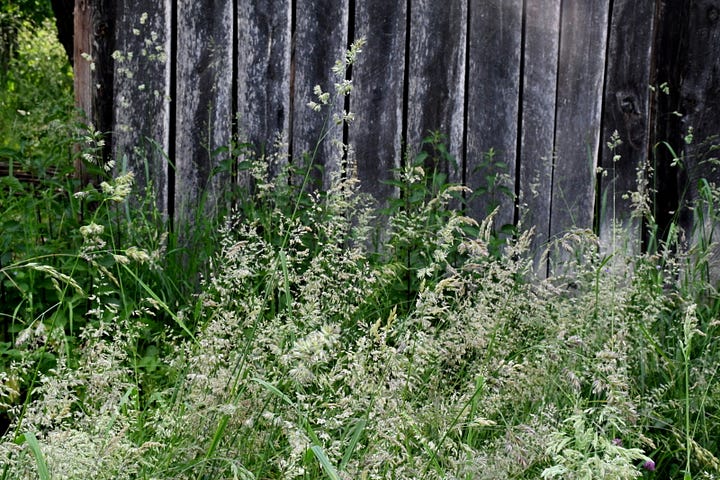

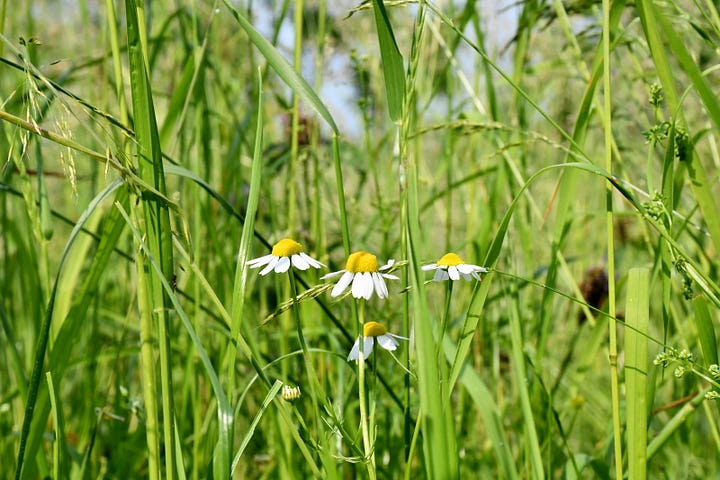
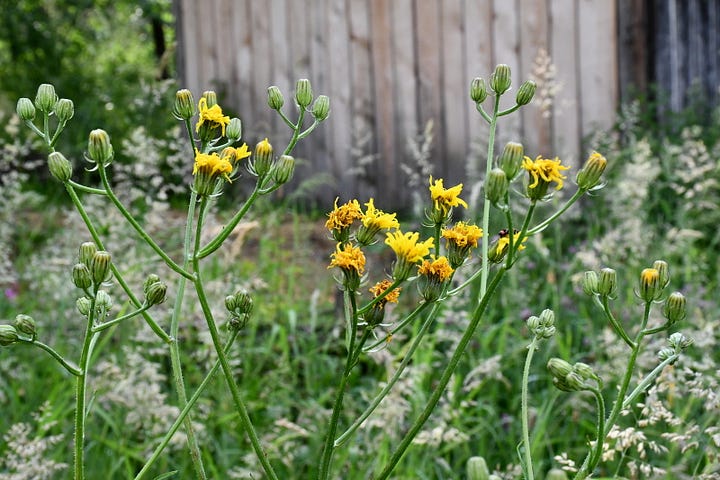
But hay, look at the incredible diversity of our meadow above!
8 species of grasses, of the ones we can recognize at a quick glance. There are also 16 species of flowering plants, some of which we know by name, and some others we don’t.
That’s more than a monoculture lawn, it’s a nutritious salad for the bovine creatures of the village.
As Csermely and I were out in the field collecting as many different plants as we could find, insects were also out and about collecting pollen from as many different plants as they could find. There’s enough for everybody when we only take as much as we need.
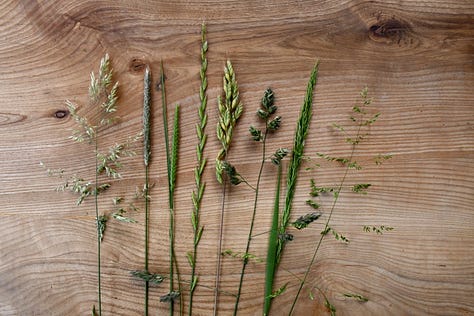
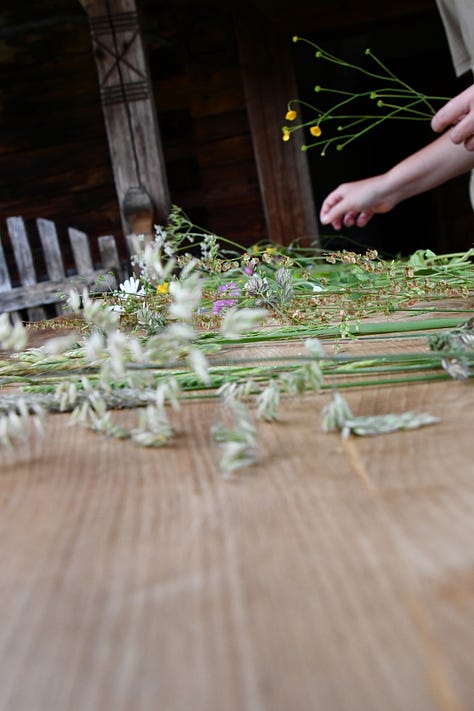
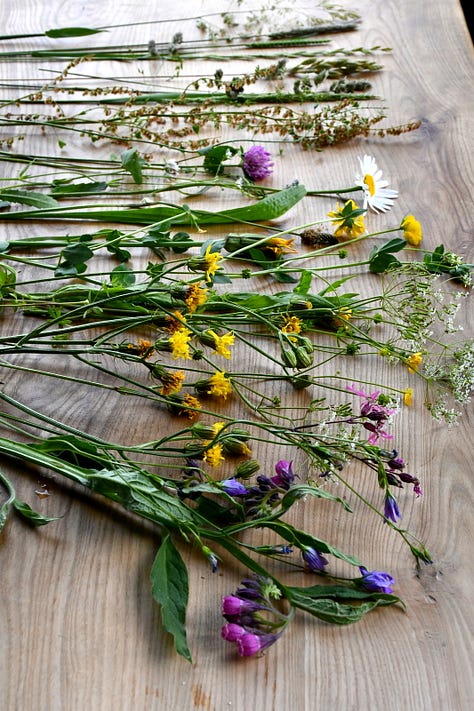
Hay fever is coming to the village in more than one way. While a few may be sneezing, many others will be taking advantage of the nicer weather projected in the forecast for next week, and will commence scything, raking, turning, waiting, and hauling the dry stalks into stacks of hay which will dot the landscape for months to come.
Hay making is an annual event of gently taming the wild, just enough to keep the soil covered and the domesticated animals happy.
I’m not sure what the deer, the pheasant, the rabbit, the fox, the wild boars or the bears think about the landscape that’s about to open up, but I’m sure they would have an opinion if you asked.
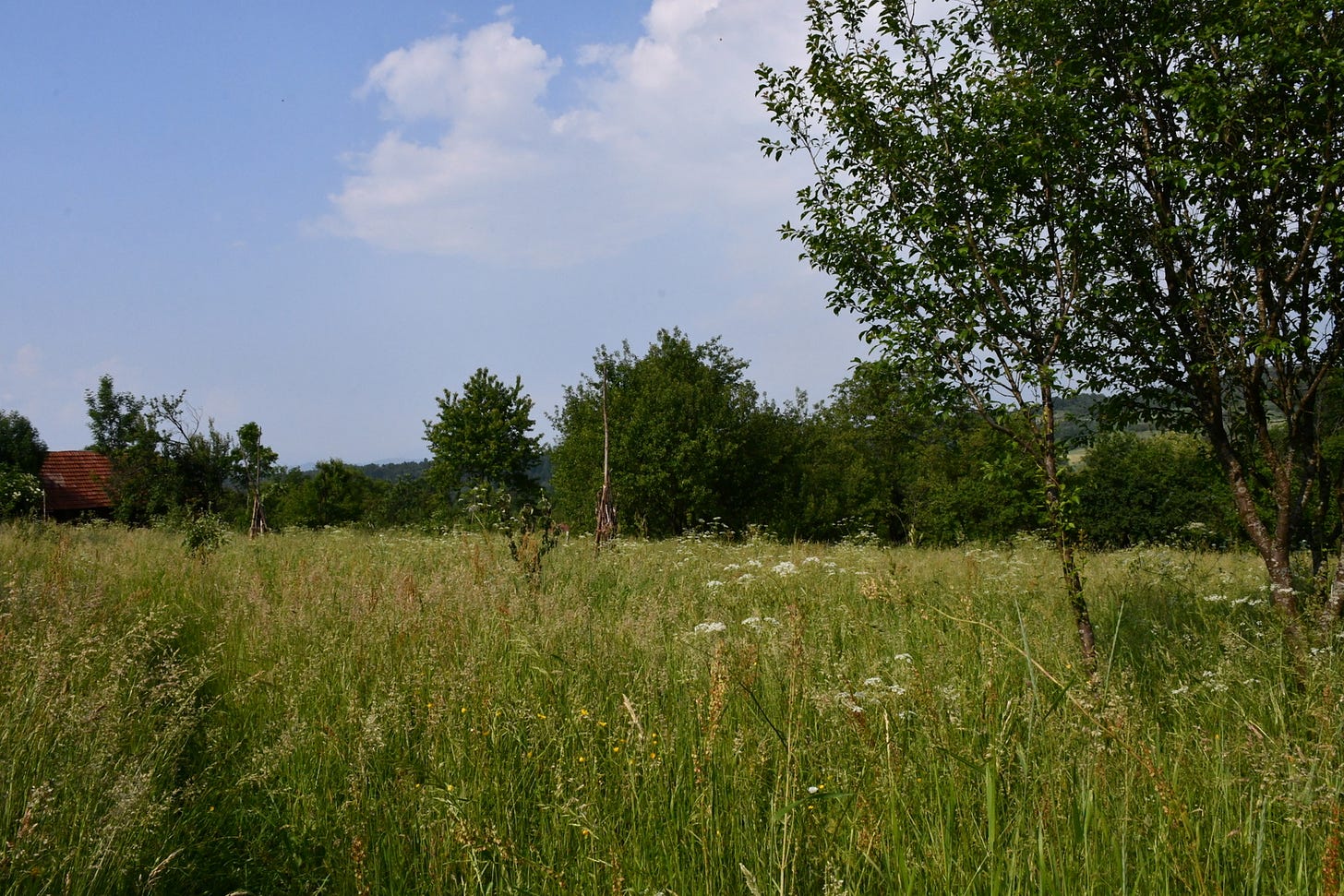
As for the nature journal prompt of the day:
How does diversity thrive in my backyard? What native plants could I add, or allow to grow, to make it more enticing for wildlife?
While we haven’t (yet) taken the time to identify every grass and flower that grows in our local area, it’s worth noting that we appreciate every one, no matter how big or small.
We appreciate you for being here too, to share this exciting and wondrous journey back to nature.
If you’ve been sitting on the fence about becoming a paid subscriber to the Daily Dose of Nature, we have a special offer for every one, valid until June 30th. We thank you for your support!
With gratitude for meadows, hay, and wildness,


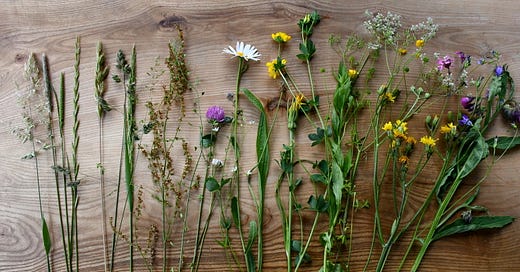



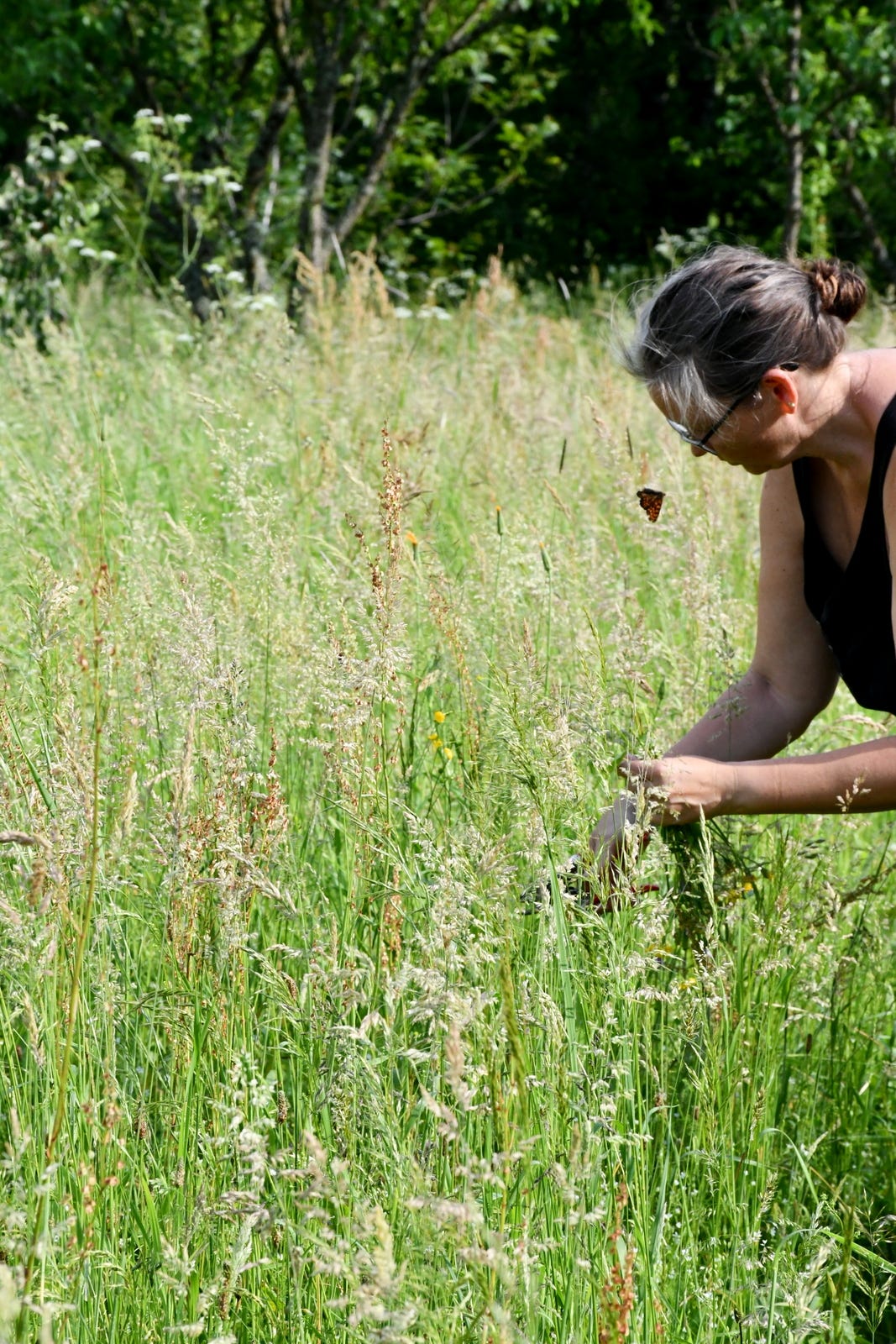

Hay fever is something which I luckily don't suffer from - however I do get the other kind of hay fever you described. It's so wondrous to think how many species of plants grow unnoticed in the meadow, and how easily they are all cut down in a few hours with a scything machine. As I look out the window and see the drying hay laying flat on the ground, it makes me think how tall it was not long ago. And that tomorrow, it will be a tall haystack. And you won't be able to tell anymore what kinds of plants are in it, since they're all the same dry. One day, it will be eaten by cows. It reminds me to be grateful for it when it's standing tall, with insects flying around it. Thank you so much for this amazing post!
What a beautiful meadow, the insects will be so happy with all that variety.
Your article made me think about my own garden, which is hardly a garden and more a forest. We have some weeds growing in there (of course, it's a forest) and I was told "you have to remove this or it will overtake". The first year I spent so much trying to remove it, which was really tricky in a dense forest. Then the next winter I noticed those weeds just die in winter, so they could never fully overtake. The forest just takes care of it... We humans like to think we always need to intervene but if we leave nature be, she knows what to do.